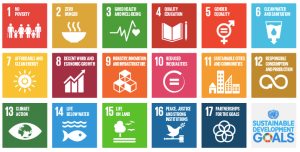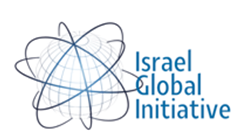 Transforming our World: the Agenda 2030 for Sustainable Development
Transforming our World: the Agenda 2030 for Sustainable Development
The Sustainable Development Goals (SDGs), also known as the Global Goals, were adopted by all United Nations Member States in 2015 as a universal call to action to end poverty, protect the planet and ensure that all people enjoy peace and prosperity by 2030. They are included in a UN Resolution called the 2030 Agenda or what is colloquially known as Agenda 2030.
The 17 SDGs are integrated – that is, they recognize that action in one area will affect outcomes in others, and that development must balance social, economic and environmental sustainability.
Through the pledge to Leave No One Behind, countries have committed to fast-track progress for those furthest behind first. That is why the SDGs are designed to bring the world to several life-changing ‘zeros’, including zero poverty, hunger, AIDS and discrimination against women and girls.
Everyone is needed to reach these ambitious targets. The creativity, knowhow, technology and financial resources from all of society is necessary to achieve the SDGs in every context.
The 17 Sustainable Development Goals (SDGs) define global sustainable development priorities and aspirations for 2030 and seek to mobilize global efforts around a common set of goals and targets. The SDGs call for worldwide action among governments, business and civil society to end poverty and create a life of dignity and opportunity for all, within the boundaries of the planet. The 2030 Agenda is a commitment to eradicate poverty and achieve sustainable development by 2030 world-wide, ensuring that no one is left behind. The adoption of the 2030 Agenda was a landmark achievement, providing for a shared global vision towards sustainable development for all.
The scale, ambition and approach of the Agenda are unprecedented. One key feature is that the SDGs are global in nature and universally applicable, taking into account national realities, capacities and levels of development and specific challenges. All countries have a shared responsibility to achieve the SDGs, and all have a meaningful role to play locally, nationally as well as on the global scale.
In addition, the 2030 Agenda integrates in a balanced manner the three dimensions of sustainable development – economic, social and environmental. The 2030 Agenda is also indivisible, in a sense that it must be implemented as a whole, in an integrated rather than a fragmented manner, recognizing that the different goals and targets are closely interlinked.
The 2030 Agenda is based on the concept of global partnership, supported by a comprehensive approach to the mobilization of all means of implementation, and is complemented by the Addis Ababa Action Agenda, which is an integral part.
Moreover, in order to ensure progress and long-term accountability, the 2030 Agenda includes a strong follow-up and review mechanism which will allow all partners to assess the impact of their actions. At global level, this is overseen by the High level Political Forum on Sustainable Development, which meets at UNHQ every year to track progress.
To facilitate monitoring, a variety of tools exist to track and visualize progress towards the goals. All intend to make data more available and more easily understood. For example, the online publication SDG-Tracker, launched in June 2018, presents available data across all indicators. The SDGs pay attention to multiple cross-cutting issues, like gender equity, education, and culture cut across all of the SDGs. There were serious impacts and implications of the COVID-19 pandemic on all 17 SDGs in the year 2020.
The Sustainable Development Goals are accompanied by targets and will be further elaborated through indicators focused on measurable outcomes. They are action oriented, global in nature and universally applicable. They take into account different national realities, capacities and levels of development and respect national policies and priorities. They build on the foundation laid by the MDGs, seek to complete the unfinished business of the MDGs, and respond to new challenges. These goals constitute an integrated, indivisible set of global priorities for sustainable development. Targets are defined as aspirational global targets, with each government setting its own national targets guided by the global level of ambition but taking into account national circumstances. The goals and targets integrate economic, social and environmental aspects and recognize their interlinkages in achieving sustainable development in all its dimensions.
The 17 SDGs are: (1) No Poverty, (2) Zero Hunger, (3) Good Health and Well-being, (4) Quality Education, (5) Gender Equality, (6) Clean Water and Sanitation, (7) Affordable and Clean Energy, (8) Decent Work and Economic Growth, (9) Industry, Innovation and Infrastructure, (10) Reducing Inequality, (11) Sustainable Cities and Communities, (12) Responsible Consumption and Production, (13) Climate Action, (14) Life Below Water, (15) Life On Land, (16) Peace, Justice, and Strong Institutions, (17) Partnerships for the Goals.
Sustainable Development Goals
Goal 1 |
End poverty in all its forms everywhere |
Goal 2 |
End hunger, achieve food security and improved nutrition and promote sustainable agriculture |
Goal 3 |
Ensure healthy lives and promote well-being for all at all ages |
Goal 4 |
Ensure inclusive and equitable quality education and promote lifelong learning opportunities for all |
Goal 5 |
Achieve gender equality and empower all women and girls |
Goal 6 |
Ensure availability and sustainable management of water and sanitation for all |
Goal 7 |
Ensure access to affordable, reliable, sustainable and modern energy for all |
Goal 8 |
Promote sustained, inclusive and sustainable economic growth, full and productive employment and decent work for all |
Goal 9 |
Build resilient infrastructure, promote inclusive and sustainable industrialization and foster innovation |
Goal 10 |
Reduce inequality within and among countries |
Goal 11 |
Make cities and human settlements inclusive, safe, resilient and sustainable |
Goal 12 |
Ensure sustainable consumption and production patterns |
Goal 13 |
Take urgent action to combat climate change and its impacts |
Goal 14 |
Conserve and sustainably use the oceans, seas and marine resources for sustainable development |
Goal 15 |
Protect, restore and promote sustainable use of terrestrial ecosystems, sustainably manage forests, combat desertification, and halt and reverse land degradation and halt biodiversity loss |
Goal 16 |
Promote peaceful and inclusive societies for sustainable development, provide access to justice for all and build effective, accountable and inclusive institutions at all levels |
Goal 17 |
Strengthen the means of implementation and revitalize the global partnership for sustainable development |
